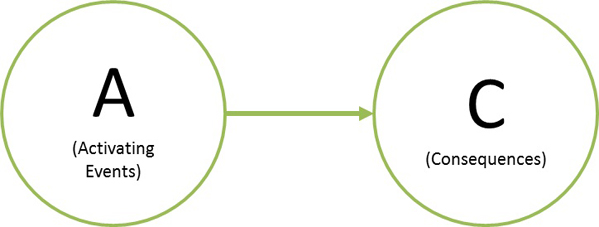
Cognitive Behavioral Therapy
Cognitive Behavioral Therapy In A Nutshell
Here is a useful diagram to understand the underlying premise of cognitive behavioral therapy:

Most of us don’t think in terms of the above schematic. We don’t factor our beliefs about the world, our hidden biases, into the equation. We’re all narcissists to a greater or lesser degree, and what this narcissism causes us to do is to treat many of our own subjective interpretations of events as if these interpretations were objective reality, as if they weren’t interpretations at all but simply the way things are. No need to question or actively challenge our beliefs, no need to look for evidence to confirm or deny them, because for us they aren’t experienced as beliefs, they’re experienced as reality.
Our narcissism compels us to think of the world in terms of the diagram below:

So the great power of cognitive behavioral therapy is to open up a bunch of hidden space in between activating events and consequences in order to spend more time reflecting at a stage that really matters but is given short shrift.
It’s our beliefs about activating events that lead to the consequences, not the activating events themselves. And many of these beliefs are faulty thinking patterns, also known as cognitive distortions. Like we already said these patterns of thought cause us to process activating events in skewed ways that we take for granted as valid, and these ways lead to dysfunction in life and relationships without us even realizing it.

